
The Radiac Company
The Radiac Company, also known as the "The Atomic Center", of 489 Fifth Avenue, New York City, New York was one of the first companies to offer a variety of Geiger and scintillation counters to the general prospector. They were the “Suppliers of Geophysical and Atomic Detection and Measurement Instruments”. In 1949, the Radiac Company offered the Sniffer, made by Troupe Engineering, a revolutionary Geiger counter for $54.50. They offered units from leading manufacturers such as Precision Radiation Instruments, Detectron, Fisher, Victoreen and others. Other manufacturer's instruments sold by The Radiac Company had the Radiac Company name on them in place of the original equipment manufacturer. They claimed to be the oldest supplier of atomic and geophysical prospecting instruments. The equipment is sold to the Atomic Energy Commission and U.S. Geological Survey as well as professional geologists, amateur prospectors, and weekend vacationers. Prices ranged from $35 to $555 in 1955. In the early 1950’s the Radiac Company became “The Atomic Center” for instruments and equipment and “comprehensively serving the field of nucleonics”.

The Radiac Company Logo 1950's
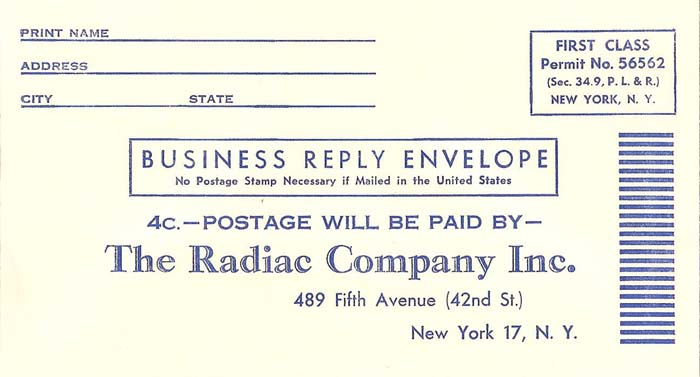
The Radiac Company Business Envelope 1950's
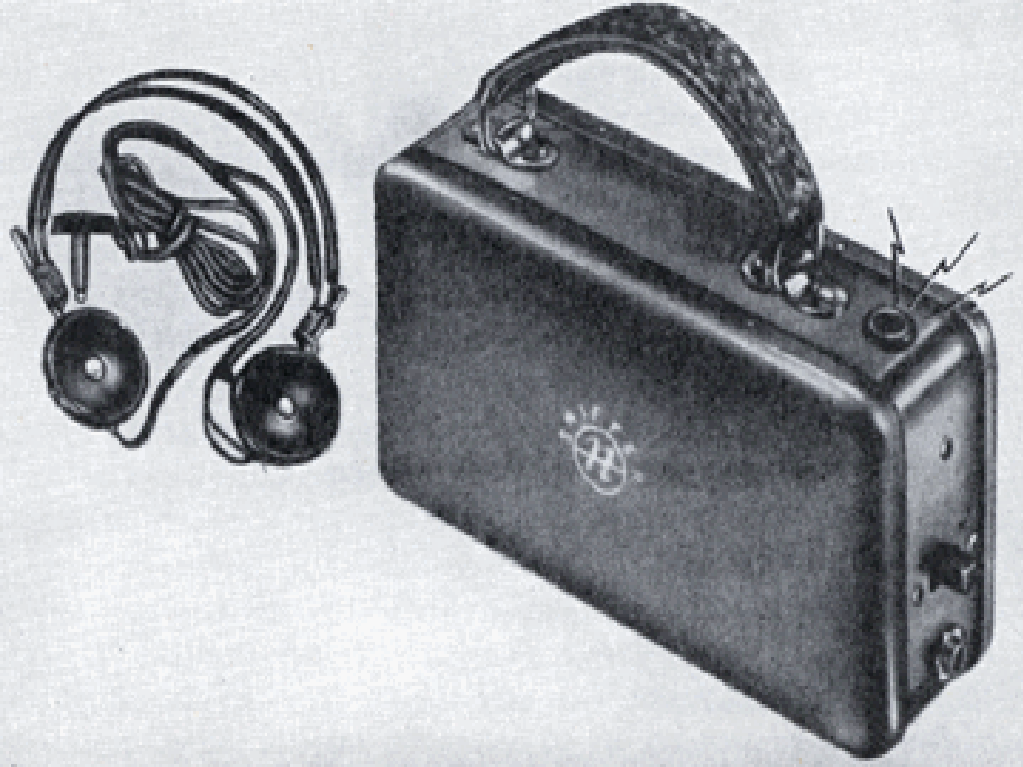
The Radiac Company Sniffer 1956
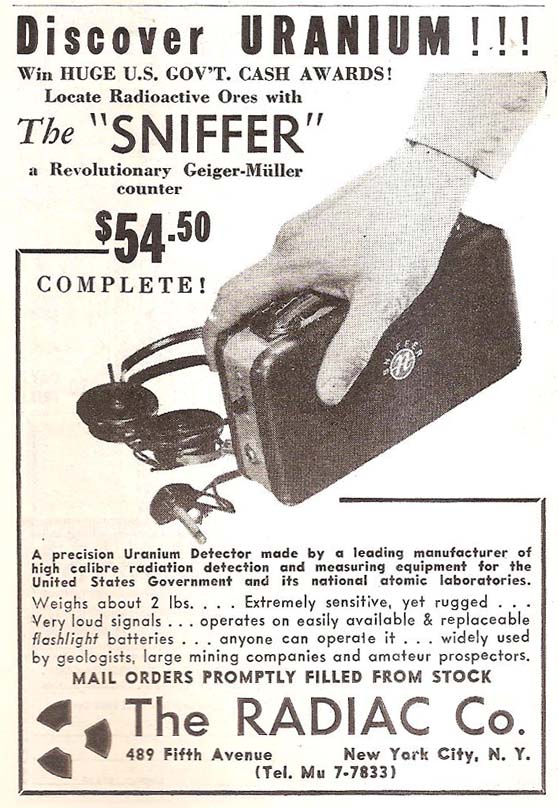
The Radiac Company Sniffer Ad1949
The Radiac Company was also advertised as an “Atomic Instrument Department Store for the Atomic Age”. It was a Division of the Atomic Center and noted as a Supplier of Portable Radioactivity Detectors. In 1951, the company flyers outlined over 25 portable radiation detection instruments for sale.
One of the instruments offered in 1951 was the Orlocator. The unit was a lightweight (22 oz.), ultra sensitive Geiger counter designed for prospectors and sportsmen. It had an on-off switch and headphones. It also has a neon blinker light. The unit was shaped like a flashlight with a clip for your belt. It used one 1.5 volt flashlight battery. It sold for $34.50.
Need photo
Orlocator 1951
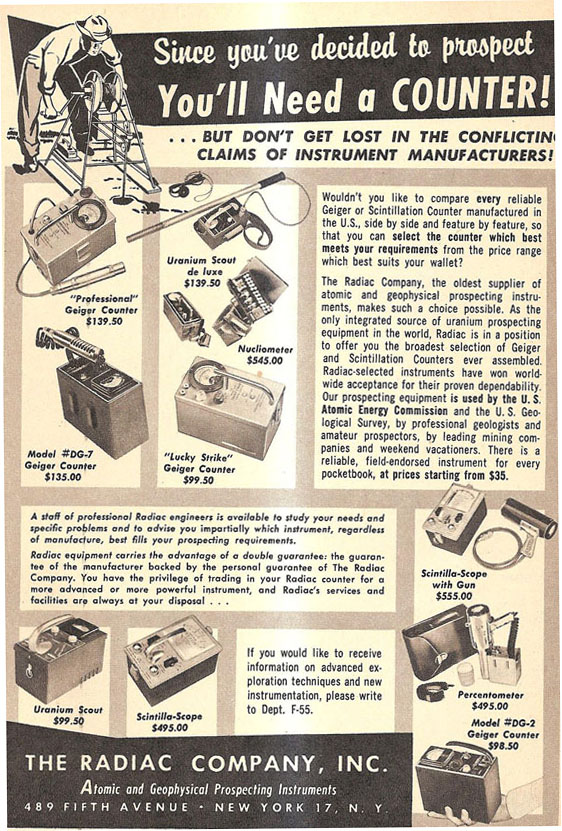
The Radiac Company Ad 1955
The Prospectoscope Model 105-D, offered by the Radiac Company, was a specially designed instrument for high sensitivity. The unit had one of the largest Geiger tubes, 26 inches x 2 inches diameter. The tube can be removed from the case and placed on top of a car or clamped to the window for mobile prospecting. Uranium discoveries have been made this way with prospectors driving slowly along highways and remote roads.
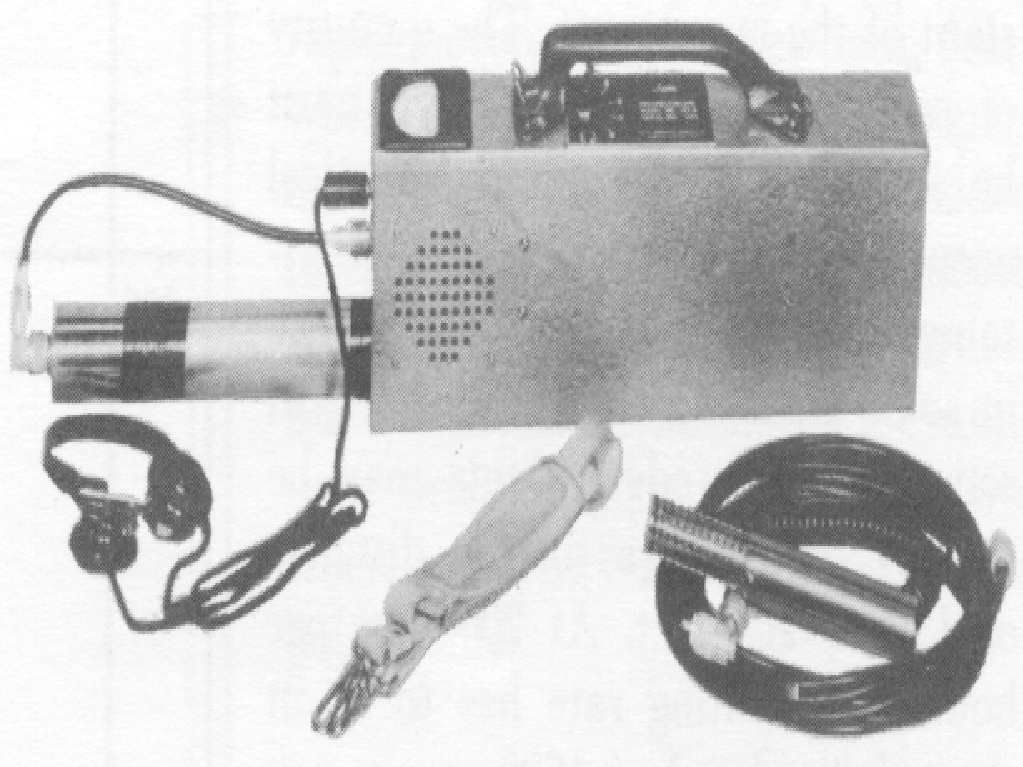
Radiac Company Prospectoscope Model 105-D 1953

Prospectoscope Model 105-D 1955
The Model GC-235 “Prospectometer” (Goldak Company) sold for $149.50 in 1955. The unit had a watertight directional external probe with a revolving shield for betas. It had three indictors – count rate meter, earphones and neon flashing light, and had three ranges from 0.2 to 20 mR/h. It used two 1.5, two 45 and one 22.5 volt batteries. It came with a calibration chart and calibrating standard. It came in a gray hammertone baked enamel finish and was completely water-proofed, tropicalized and fungus resistant. The unit was 3-3/4” x 7-7/8” x 4-3/4” and weighed 5.5 lbs.
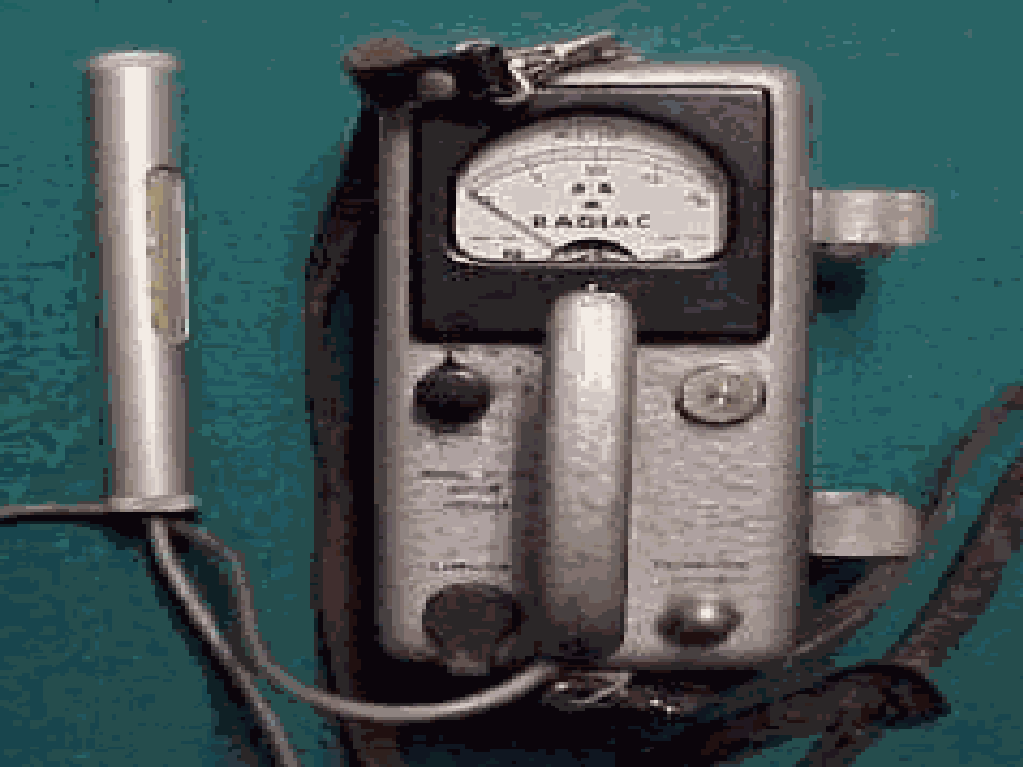
Radiac Model GC-235 Prospectometer 1955
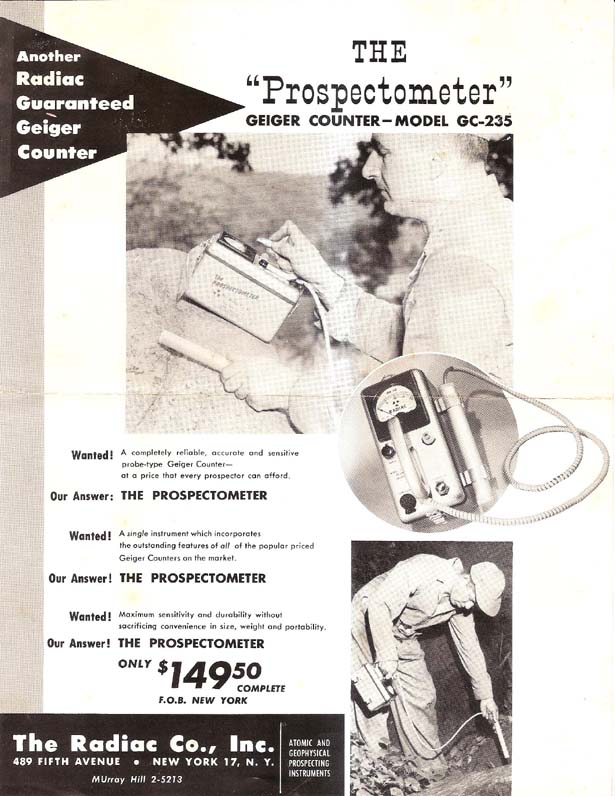
Radiac Model GC-235 Prospectometer Ad 1955
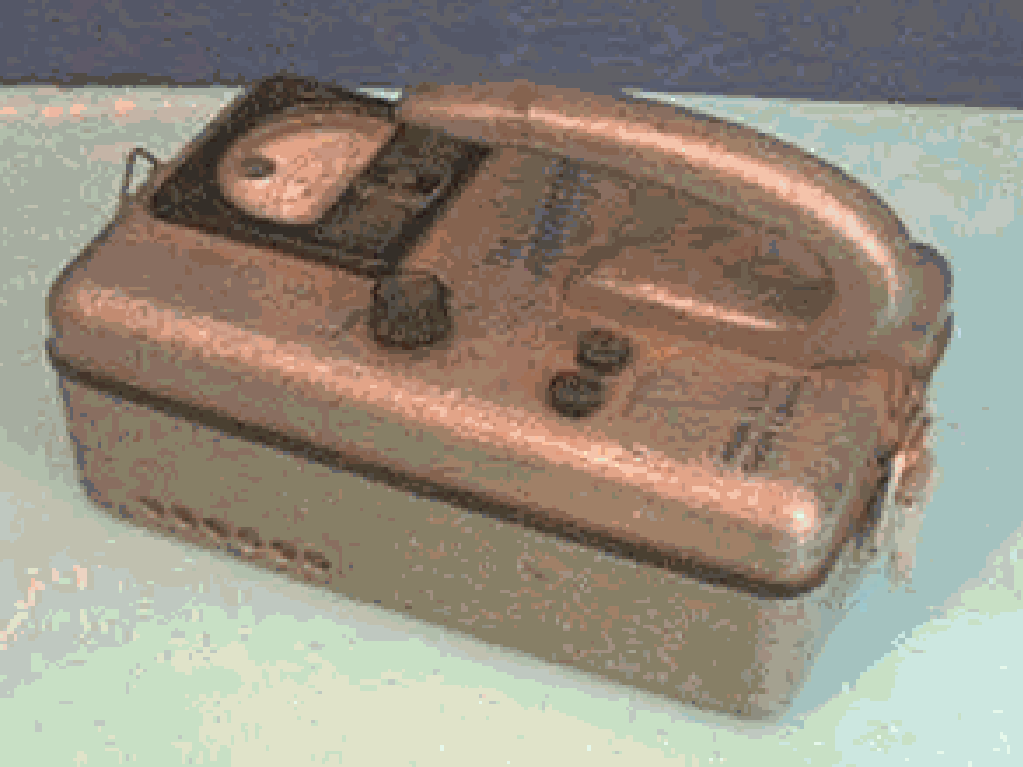
Radiac Prospector Model U-235B
The Prospector Model GC-238 was offered in 1955 for $84.50. The unit was low priced for the weekend prospector. The GM tube was contained inside the gray, hammertone-finished case.
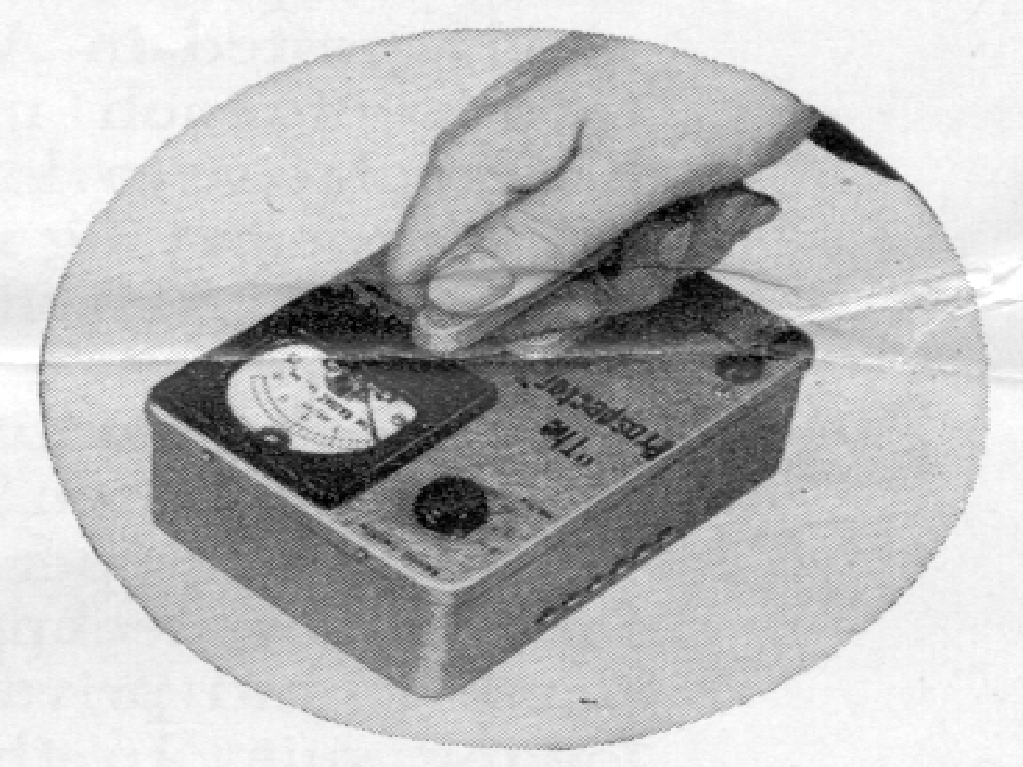
Prospector Model GC-238 1955
The Radiac Company offered two new scintillation counters in 1953 for oil and uranium surveys. The first was the Fission Finder Survey Meter (Victoreen). The unit has a sodium iodide detector in an external probe. The scale was 800, 8,000 and 80,000 cpm or 0.05, 0.5 and 5 mR/h. It measured 9-7/8” x 4-11/16” x 8-1/4” and weighed 7.5 lbs. It used one 1.3 and two 4.5 volt batteries. The unit is more than 100 times more sensitive than a Geiger counter and is particularly useful where overburden has reduced the surface radioactivity to a small fraction of the background. The probe was designed for exploring crevices and geologic faults. The unit sold for $495 in 1955. A Super Fission Finder was also sold for $860.
The Atomlab's Model DG-700 was offered in 1955 as a beta-gamma discriminating radiological survey meter. It sold for $185 complete with shoulder strap and mounted calibrating source. It has ranges of 0-0.5, 0-5, 0-50 mR/h. The probe was external on a cable. The unit measured 4-3/4" x 4-7/8" x 8-7/8" and weighed 6 lbs. It came in a grey hammertone finish and was easy to decontaminate.
Need photo
Atomlab's Model DG-700 1955
The Fission Finder control unit could be used with the Fission Tackle. The Fission Tackle was a scintillation counter designed for exploring drill holes for uranium ore. The scintiillator is contained in the end of a long probe with a long cable. The unit is custom made to the customer’s specifications. The Deep Drill Hole Well Logger was a customized version of the Fission Tackle and sold for $1700.
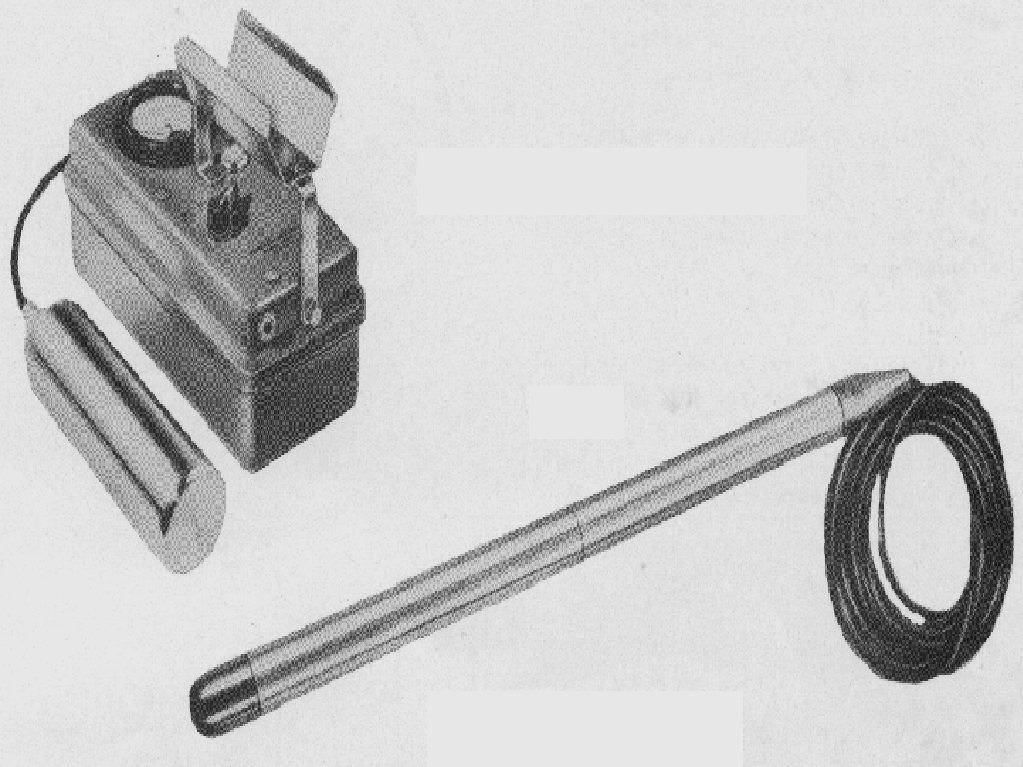
Fission Finder and Fission Tackle 1953
When the Radiac Company became “the Atomic Center”, they offered the Atomlabs Model DG-700 Geiger counter as a beta-gamma radiological survey meter in 1955. It sold for $815. It was designed as a civil defense meter to meet Federal Civil Defense Administration specifications. The ranges were 0.5, 5 and 50 mR/h. It used a mercury cell battery, a 67.5 and two 22.5 volt batteries. It was 4.75” x 4-7/8” x 8-7/8” and weighed 6 lbs. It came in a gray, hammertone finish and was easy to decontaminate.
Need photo
Atomlab’s Model DG-700 1955
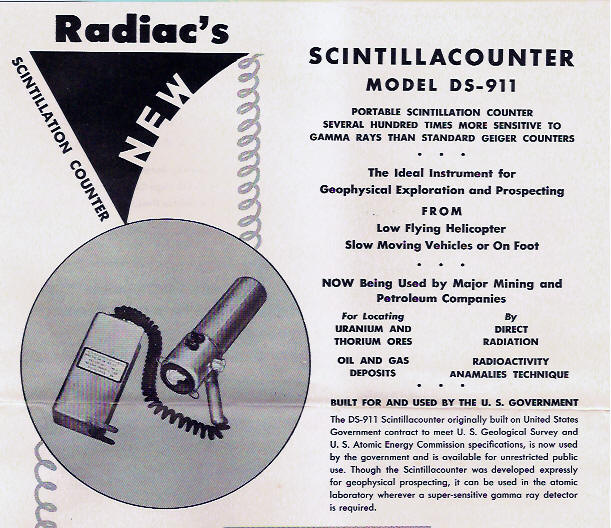
Scintillacounter Model DS-911
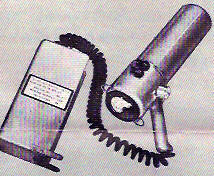
Scintillacounter Model DS-211
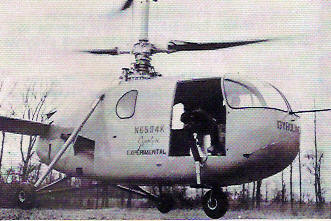
Scintillacounter Model DS-211 operated from helicopter 1950's
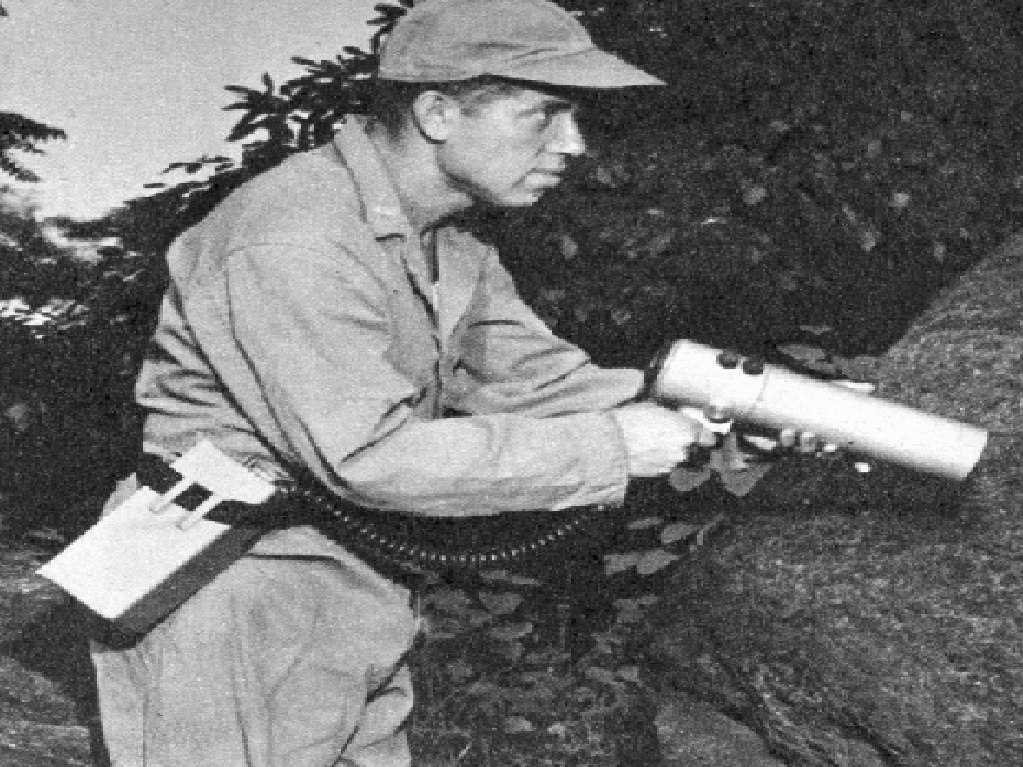
The Radiac Company (Scintillacounter Model DS-911) 1950's
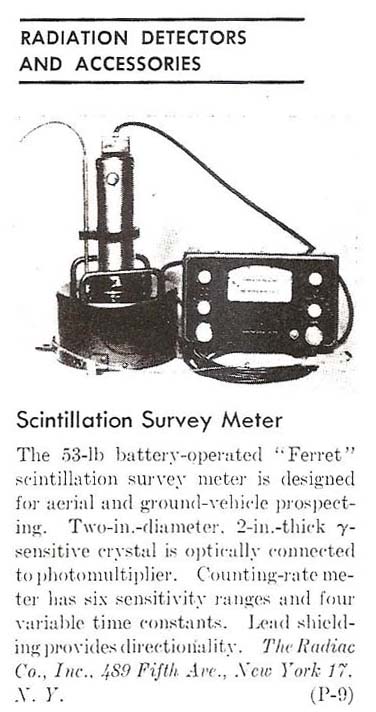
The Radiac Company Ferret Airborne Detector Ad 1954
During its peak, The Radiac Company offered a large variety of Geiger counters and scintillators from almost all manufacturers. Prices ranged from $50 for the basic Geiger counters to over $5,000 for advanced scintillation counters. The picture below is a collage of detectors offered in 1955.
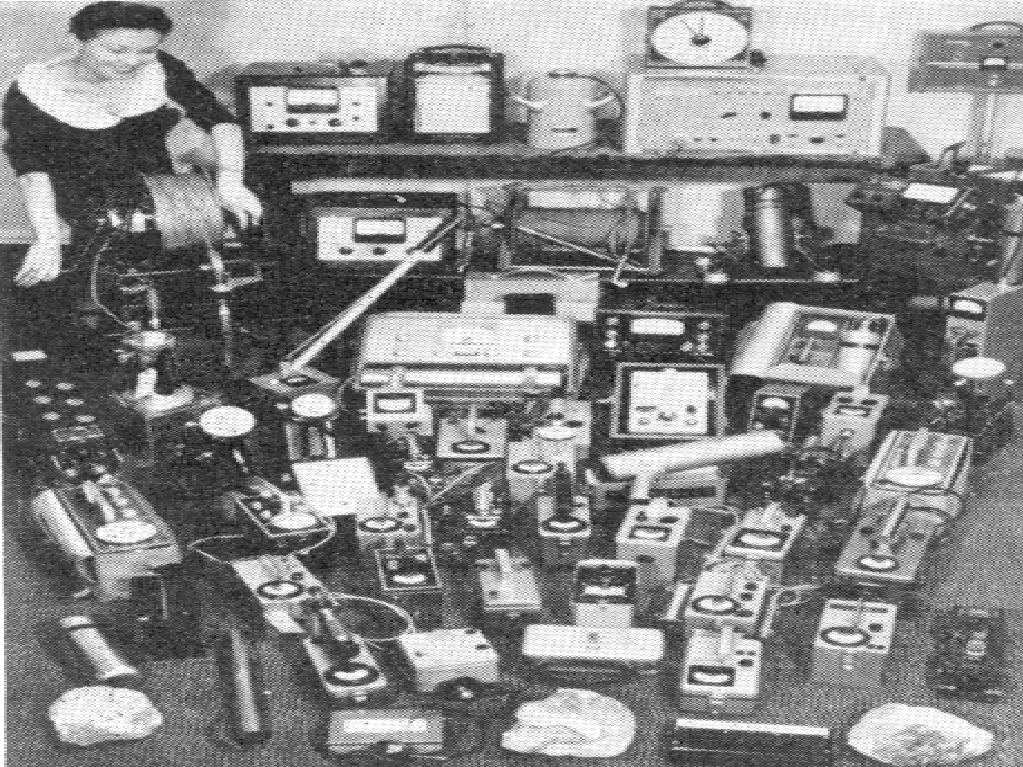
The Radiac Company Product Line 1955
The following section shows some advertisements from The Radiac Company from the 1950's. The majority of the products were from suppliers of radiation detection equipment and were distributed by The Radiac Company.
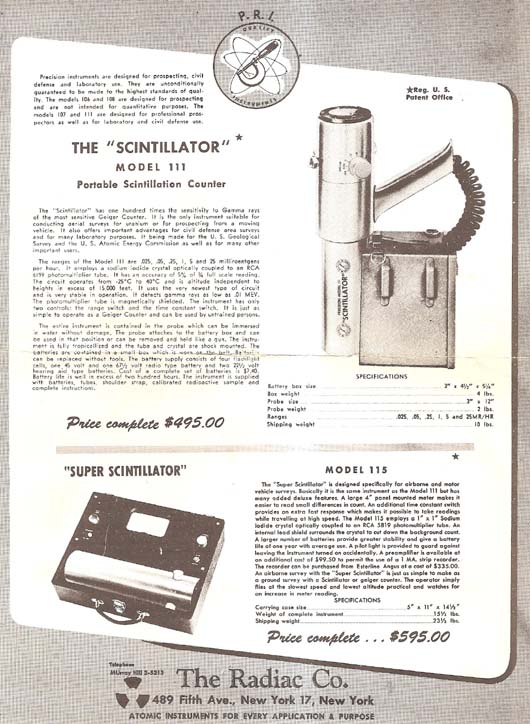
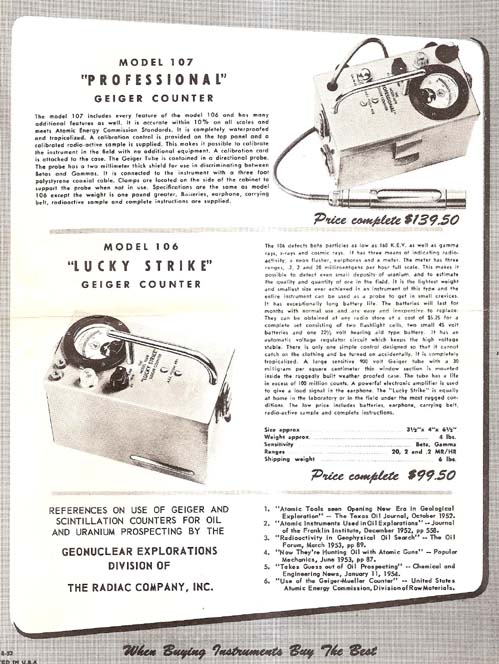
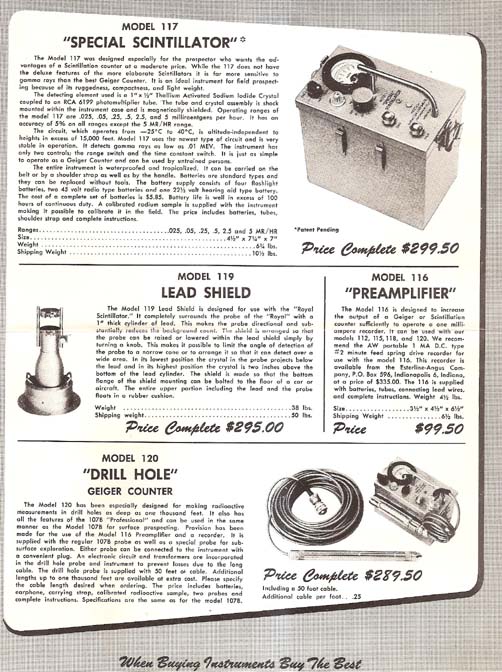
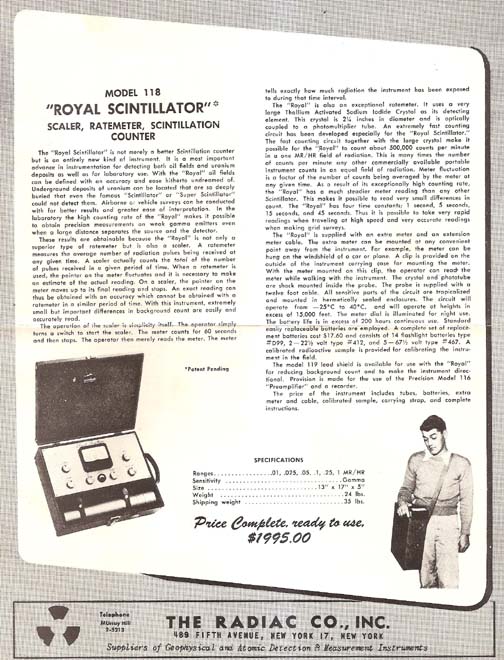
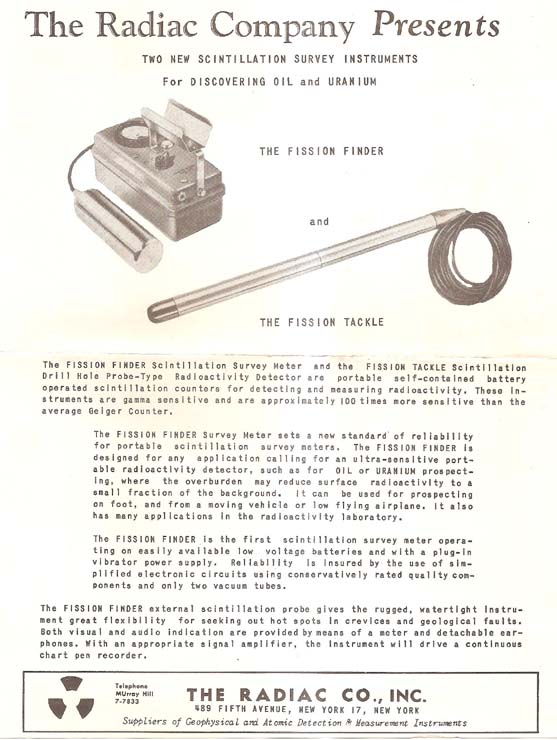
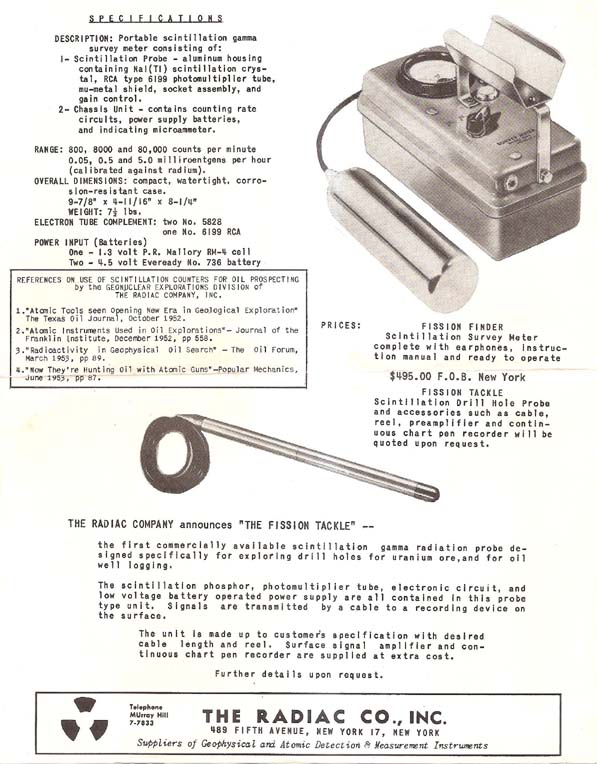
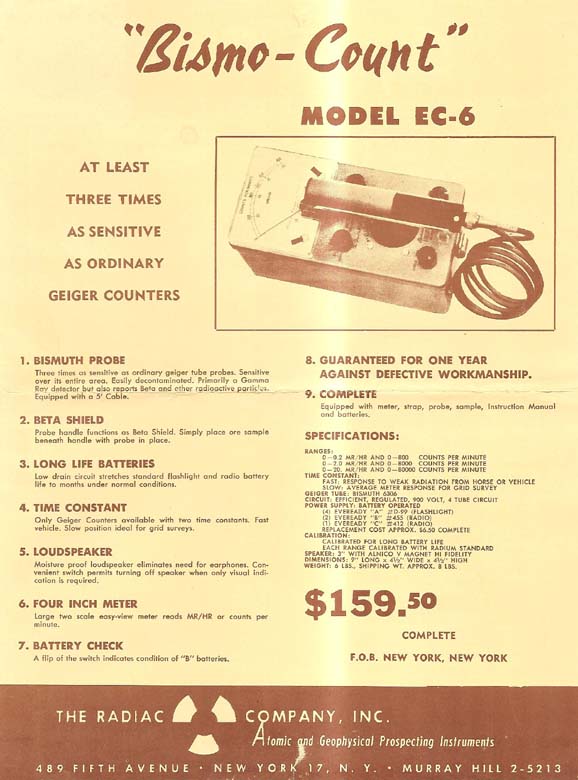
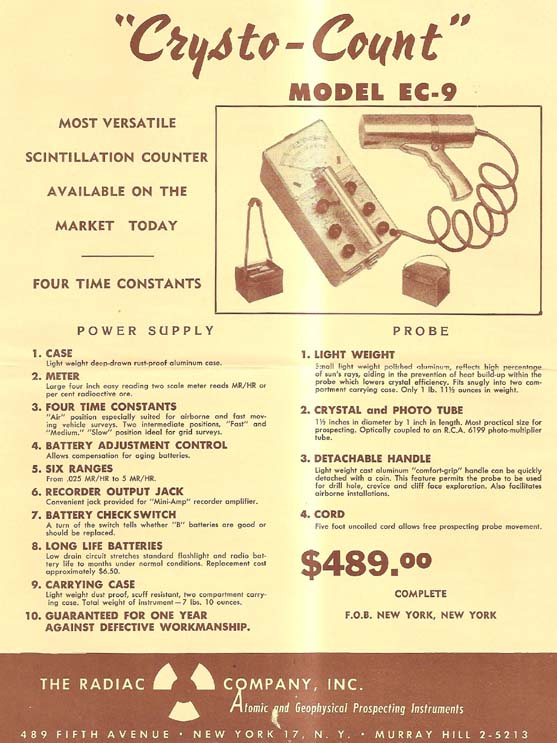
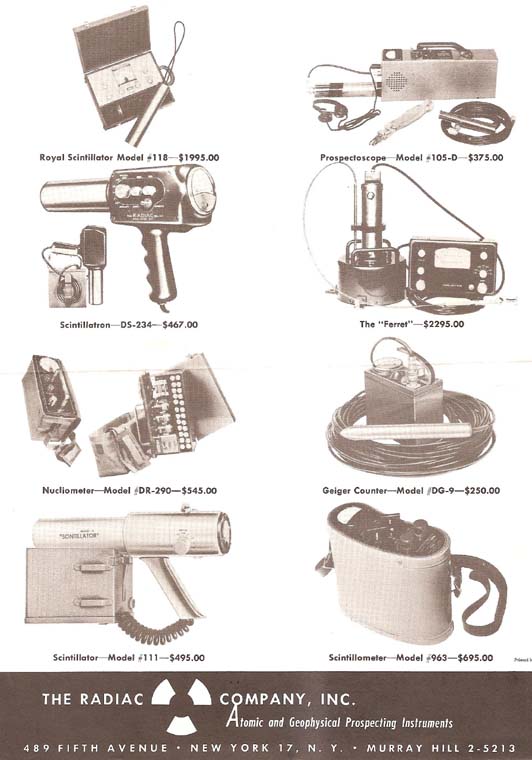
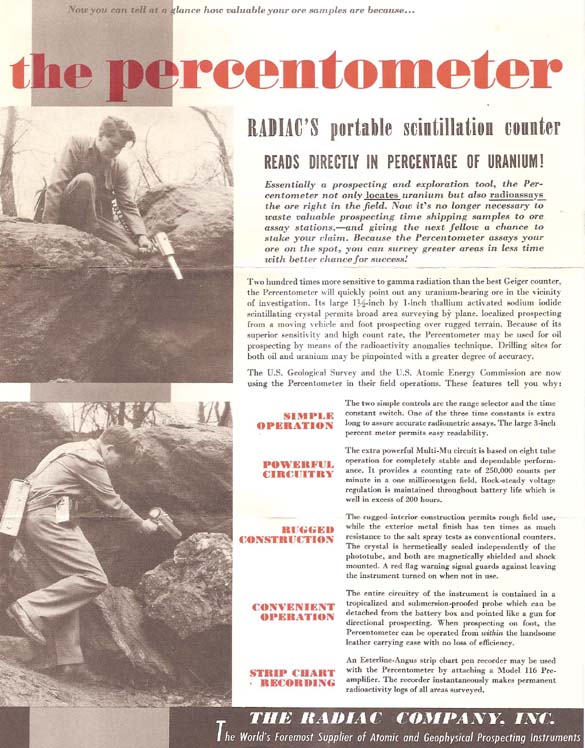
The Radiac Company Ads 1952

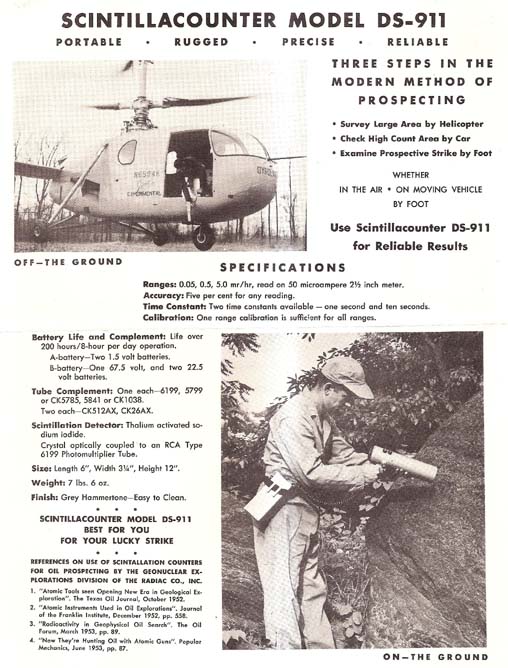
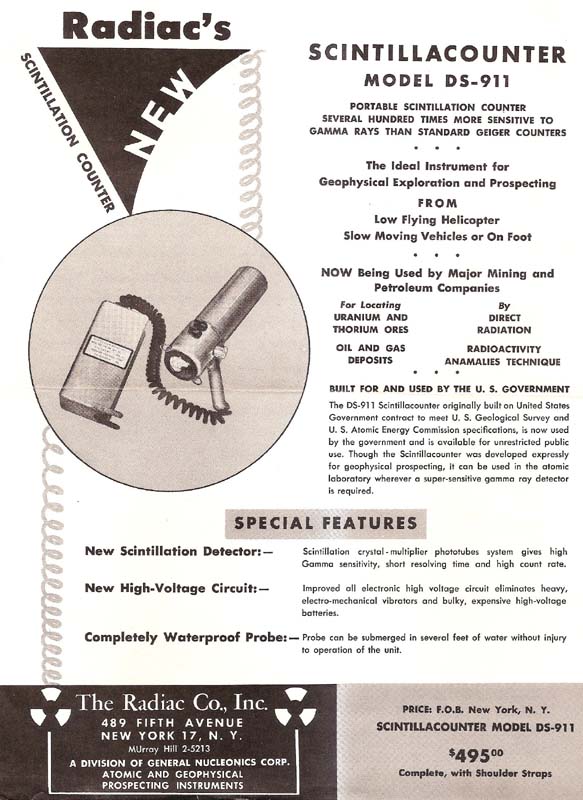
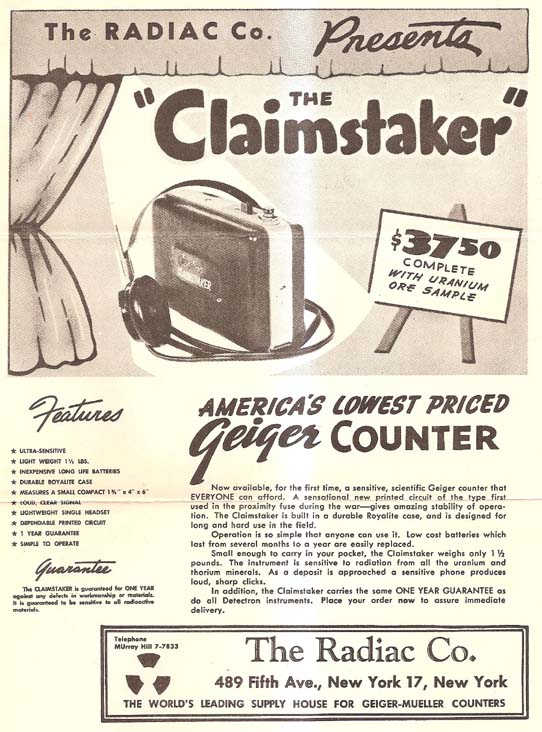
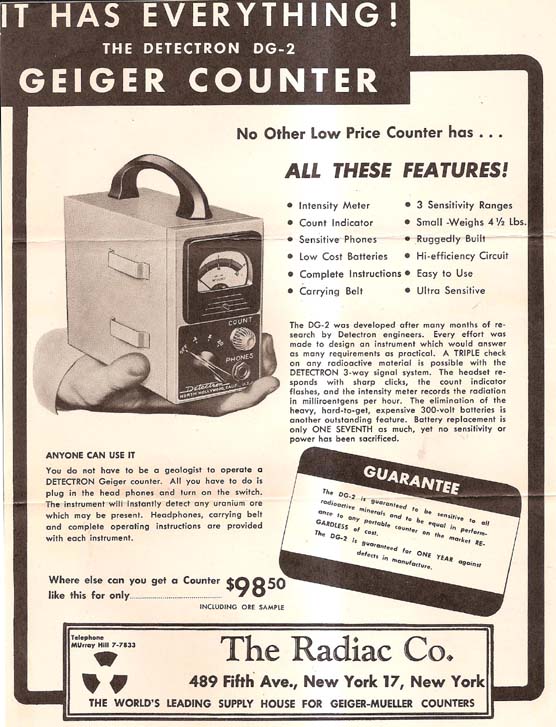
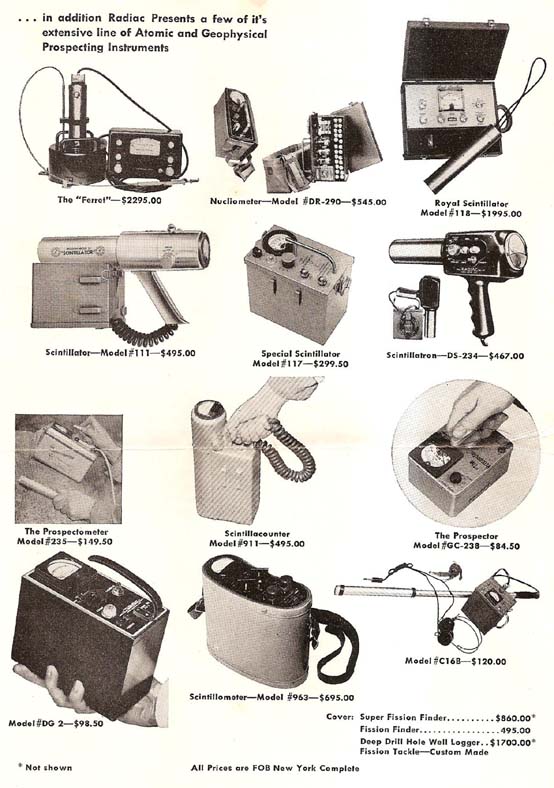
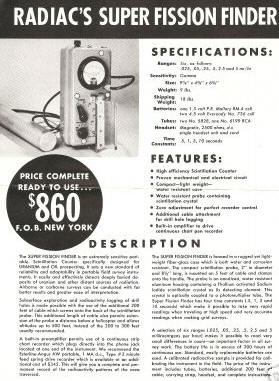
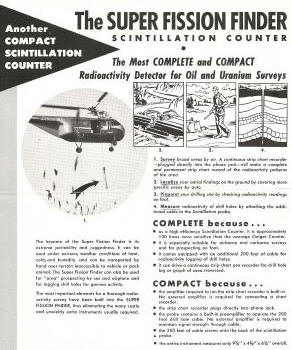
The Radiac Company Ads 1950's
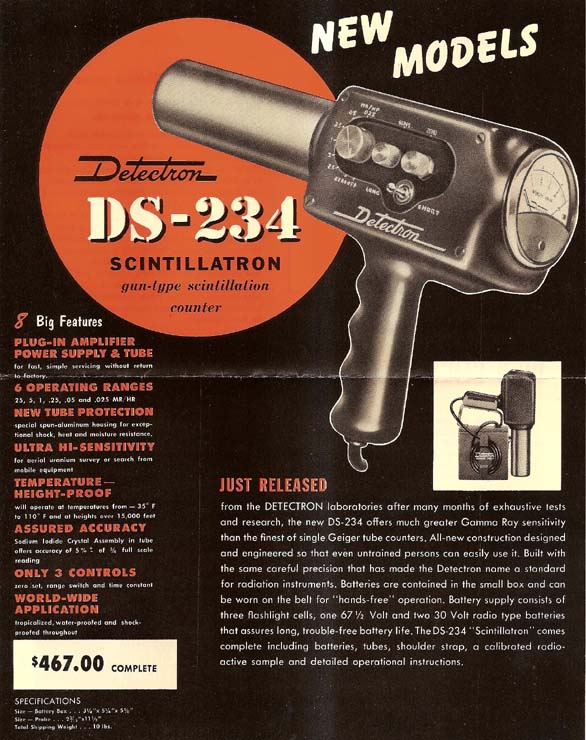

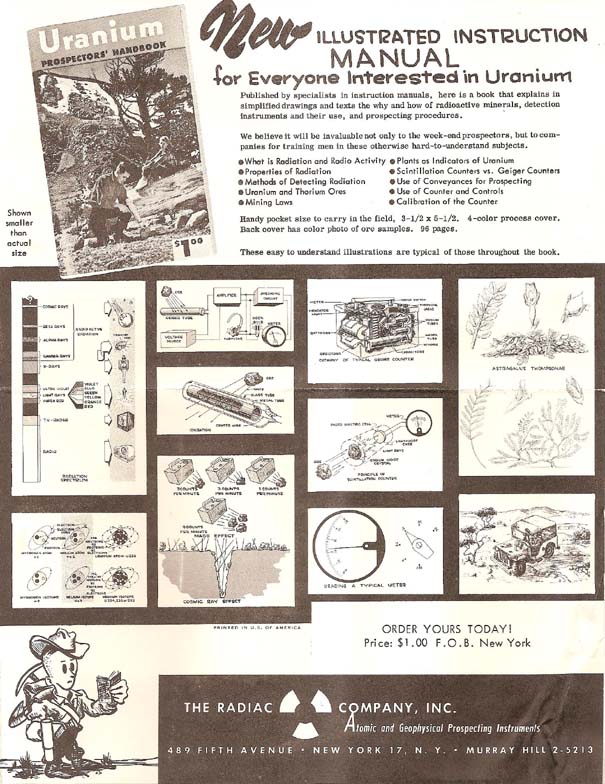
The Radiac Company Ads 1955